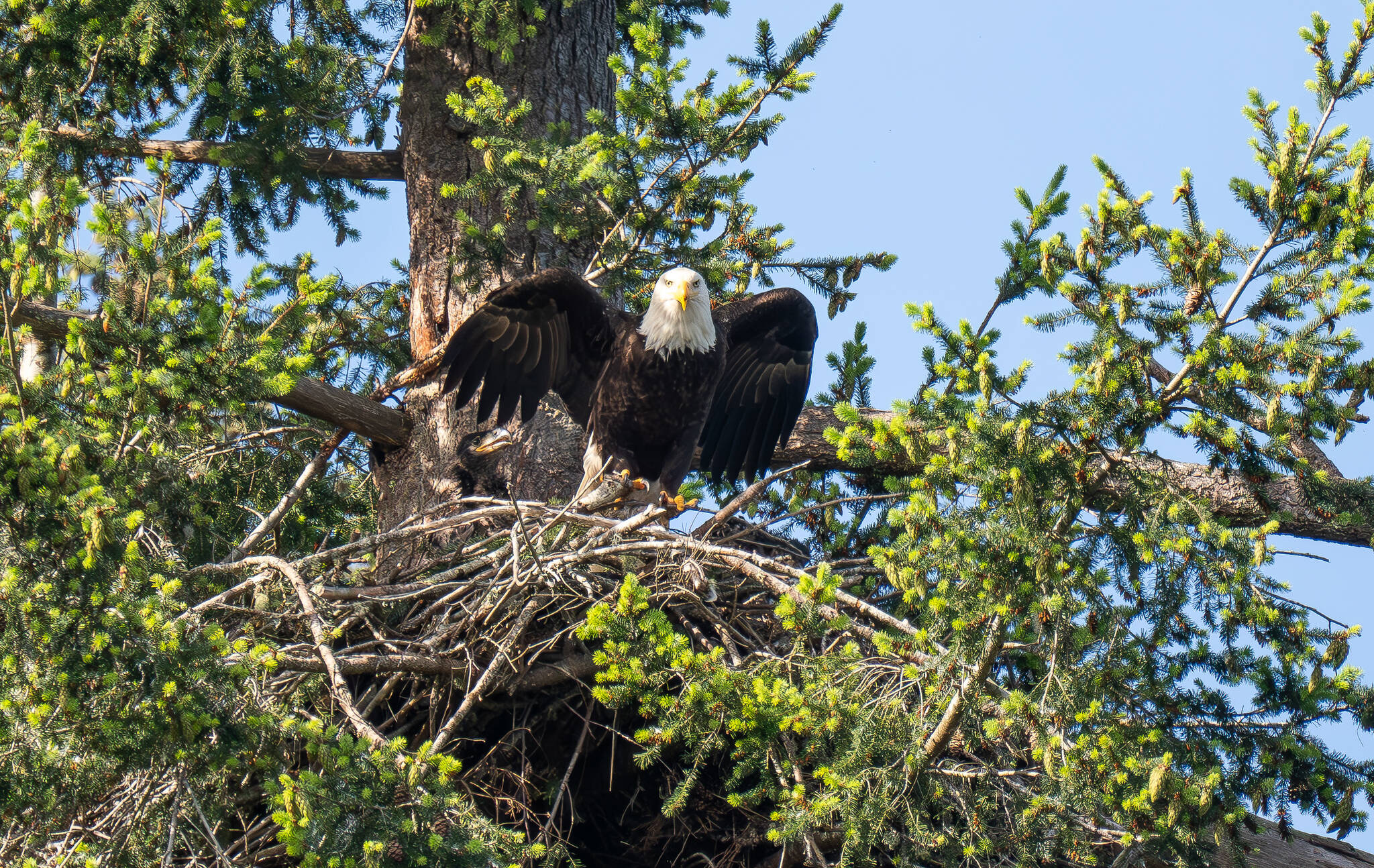When pyrotechnics take to the skies with their dazzling displays of fireworks this Fourth of July, it’s not only Fido who will cower from the sound of the big booms.
In fact, fireworks have a profound impact on the wildlife of Whidbey Island, including the nation’s possibly most patriotic symbol – the bald eagle.
Although there are federal protections in place to keep them from direct harm, fireworks and other disturbances can cause young fledglings to fall out of their nests and become vulnerable to predators on the ground, according to Kurt Licence, a biologist for the state Department of Fish and Wildlife.
“When you have who knows how many people setting off fireworks at these different locations, which is the blast that pushed this eagle out of its nest and then a coyote got it?” he said.
Last month, South Whidbey resident Linda LaMar photographed an eaglet in black juvenile plumage in a tree above her home on Goss Lake. Since then, her neighbors have spotted a second eaglet in the same nest. She estimated that the eaglets will be around 10 weeks old during Fourth of July celebrations, which according to the Audubon Society, is a critical time for fledglings that are just learning to fly.
“I can’t say that I know it’s different from other years, but I do know these eaglets are at risk,” said LaMar, who’s lived in the area since 2017. Every year, she, her husband and their dog leave the neighborhood to avoid raucous Independence Day celebrations.
LaMar is a member of Safe and Humane Fireworks of Island County, a group that advocates for permitted municipal fireworks shows.
Licence said it is important for people to attend community-based fireworks displays at conscientious locations away from sensitive wildlife areas where birds may be nesting.
“A single night of disturbance can cause a complete colony failure, and we’ve seen this a number of times in Washington,” he said, pointing to an example in nearby Padilla Bay, where a colony of American white pelicans failed to nest around the Fourth of July.
A 2023 study in the Netherlands found that approximately 1,000 times as many birds were in flight on New Year’s Eve than on any other night. It also determined that “fireworks-related disturbance decreased with distance, most strongly in the first five kilometers, but overall flight activity remained elevated tenfold at distances up to about 10 kilometers.”
Bald eagles are a conservation success story. Their numbers became so bountiful that they were removed from the federal endangered species list in 2007, and from the state list of protected species in 2016.
“I wouldn’t be surprised if there were nesting territories in the triple digits on Whidbey Island alone,” Licence said.
Still, harassing one can lead to serious consequences. Violation of the Bald and Golden Eagle Protection Act can result in a $100,000 fine and/or one year of imprisonment. But without photos or video footage, this can prove difficult to enforce.
Although the county planning department has a layer on its mapping system that identifies nests and bald eagle management zones, the information is confidential in order to protect the wildlife from harassment.
Licence encourages people to use the state Department of Fish and Wildlife’s online observation tool to report eagle nesting territories. He recommends providing polite and informed outreach and education regarding sensitive wildlife areas to individuals planning to create a potential disturbance.
“I think it’s important to celebrate our great nation’s independence and the many freedoms we enjoy, and it’s also critically important to protect the parts of our nation that make it equally great,” he said.
In the event of an immediate public safety issue, wildlife violation, or an injured or dangerous animal, call the enforcement office at 360-902-2936 or email enforcement-web@dfw.wa.gov.



